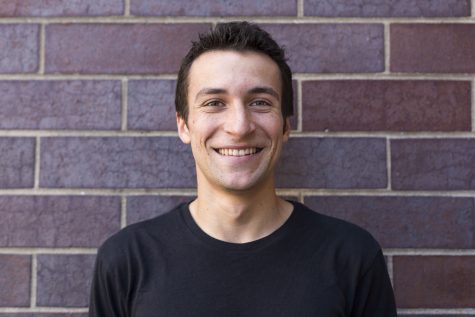NYU Shanghai opens Jinqiao Residence Hall
August 28, 2015
With the new school year kicking into gear, those attending NYU Shanghai will be making another adjustment, as 600 students will file into the newly constructed Jinqiao Residence Hall — the third new living arrangement in three years.
The new dorms, which were completed this summer, are made up of three buildings, feature suite-style rooms — similar to the living conditions at NYU’s Washington Square campus.
During the 2013-14 academic year, NYU Shanghai students were housed in the dorms at East China Normal University. NYU Shanghai also used ECNU facilities for academic purposes and dining halls, while its own facilities were being completed.
With construction of the academic buildings being finalized before the residence halls, students spent last year living in Motel 268, a living arrangement that was only temporary.
Now, with the Jinqiao dorms fully constructed, students will move again, as the university works to create permanent living space for the relatively new campus. Spencer Smith, who spent the previous year at NYUSH and will be a sophomore there this fall, said the new dorm is already very different from last year’s arrangements. Some students estimated it could take between 20 and 45 minutes to commute to school, and Smith said he felt the location of the dorms in Jinqiao somewhat removed the students from traditional Chinese culture.
“The new location is considerably farther away from our school and almost all nightlife, but we’re living in a more Western neighborhood, and that may or may not be a good thing depending on who you ask,” Smith said. “If you ask me, I’d say in the long run it is a bad thing because we are much less integrated with Chinese culture.”
Sohrob Moslehi, an incoming freshman at NYU Shanghai, echoed Smith’s concerns, saying this year’s living arrangements are disappointing compared to how integrated the students have been in past years.
“I’m very disappointed by Jinqiao’s Western characteristics, and the commute I’m forced to make as a result of the dormitories’ location,” Molehi said. “The dormitories’ distance from school and mostly everything that makes Shanghai culturally is disappointing.”
David Pe, associate dean of students at NYUSH, acknowledged that things might be different, but said the new arrangement will leave students with more opportunities.
“[Students] should rethink how they operate within the NYU Shanghai community and how this transcends to the whole urban city of Shanghai,” Pe said to On Century Avenue, NYU Shanghai’s student newspaper. “This will be possible as the new dorms are encouraging students to become more directly involved with city life.”
Despite the ambivalence about location, both Smith and Moslehi agreed that the current living situation seems to be much more communal than it has been in the past few years.
The Jinqiao dorm is intended to be a fixture for the next five to 10 years while the administration determines how available real estate in the area will allow them to adjust.
“Seeing as how this school is so new and we’re only starting our third year, time will only tell what will be permanent and won’t,” Smith said. “I would be shocked if we moved out of the new Jinqiao residence for good anytime soon, as it fulfills most of the stated goals of the school in community and cross-cultural integration.”
A version of this article appeared in the Saturday, August 29, print edition. Email Alex Bazeley at abazeley @nyunews.com.
























































































































































